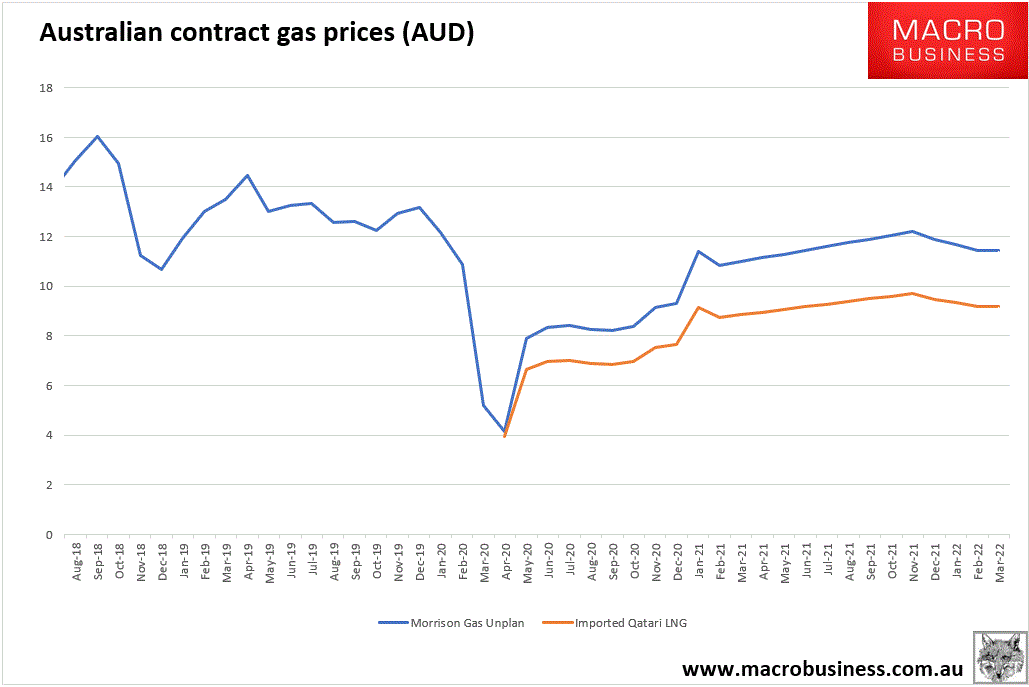LNG imports are stupid. We all know it. But it is a mistake to think that they are not a better idea than what we have. The deep corruption of the Morrison Government by the gas export cartel makes LNG imports the only way to break the stranglehold for gas consumers of scale. The AFR reports today on some progress:
- Jemena will build a $130m pipeline connecting the planned Port Kembla gas import terminal to the grid.
- This is despite the project having signed no buyers as yet.
Bulk gas consumers should do some deals with Qatar. Via Yahoo:
- Qatar Petroleum is increasing the output of gas by 40% to 110MTPA by 2026 and 126MTPA by 2027.
- The breakeven price delivered into Asia is $4MMBtu, half to one-third of Australian costs.
- Pakistan recently signed a deal at 10.2% slope to Brent.
The gas cartel charges bulk consumers in Australia at 14% slope to Brent.
It is a no-brainer for the big consumers in manufacturing to get together and import some Qatari gas to break the local cartel that has taken a hold of the Morrison Government whose Gas Unplan can’t compete:
A mix of Qatari contracted gas and Asian spot will materially lower Australian gas contract prices.
It is a measure of how badly the Morrison Government has trashed the local energy market that we can ship it in from halfway around the world that much cheaper.


